
Copyright
Copyright 2012 by Nick Robinson
All rights reserved. Bibliographical Note Halloween Origami is a new work, first published by Dover Publications, Inc., in 2012. International Standard Book Number
ISBN-13:978-0-486-49873-7
ISBN-10:0-486-49873-5 Manufactured in the United States by Courier Corporation
49873501
www.doverpublications.com
Origami is the art of folding paper to create models. These may be lifelike, abstract, or geometric forms. This book brings together a range of designs that reflect the theme of Halloween.
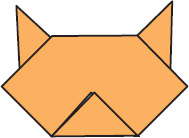
Despite what some people think, folding paper isnt something for which you need huge amounts of dexterity or skill.

Despite what some people think, folding paper isnt something for which you need huge amounts of dexterity or skill.
What you do need is a little patience and a desire to create something out of (almost) nothing. Origami is a form of magicpeople will be amazed as you create a pair of vampire fangs or a flying witch in front of their eyes.
How to Fold
The keywords are slowly and carefullytry not to rush through a model (it will look rushed) and make sure every crease is as neat and accurate as you can make it. Anything less will result in a scruffy model and possibly even an incomplete model. Truly mastering origami can be a lifetimes study.
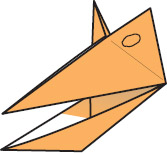
The act of folding is a motor skill that becomes easier with practice and concentration.
Until it becomes second nature, make a deliberate effort to slow the process down. Dont be tempted to position the paper quickly, but move it in smaller and smaller increments until you are sure it is in the correct position. Hold the paper in position with one hand, then make the crease with the other. Then reinforce the crease, so it is crisp and the paper lies as flat as it can.
Where & When to Fold
Preparation is the key to an enjoyable folding experience. Find a perfectly flat table with plenty of space for you to arrange your instructions and spare paper.
Always choose somewhere that is well lit. Try also to arrange for at least 30 minutes of uninterrupted time in which to concentrateif you are in a hurry, your folding may well reflect this. Dont tackle new projects when you are tired and stressed and always use larger sheets of perfectly square paperyou can look at folding miniatures later on when you have mastered the design. 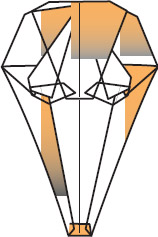
Using this Book
A range of folding techniques are used, with models ranging from the simple to the complex. You are advised to start by studying the section on symbols and basesproper understanding of origami instructions will mean you can fold not only the models in this book, but those you find on the Internet, even when they are in a foreign language. Start the models at the beginning and work your way through, unless youre already a black belt in origami.
Always read the associated text before attempting each step. Its also useful to look ahead at the next step, so you can see what you are aiming at.
If Youre Struggling
As the designs become more advanced, you may find that you dont finish the model at the first attempt. At any point, if the paper is looking tired and crumpled, simply put it in the recycle bin and start over with a fresh sheeteach time you fold a model it will become easier and look neater. If perfection was easy to achieve, it wouldnt be worth striving for, so dont expect every model to look wonderful the first time you fold it.
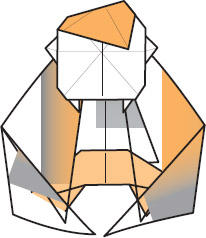
Folding in a group with other more experienced folders is highly recommended, since they will be able to quickly help you past those awkward steps and share their experiences (and models) with you.
There are thousands of small origami groups around the world. Checking on the Internet will quickly track them down and they will be delighted to meet, help, and encourage you.
Paper
When learning a model, most types of thin paper will be OK, but make sure the sheet is on the large side. Once you have perfected the folding sequence, choosing the right type of paper can make a big difference to the finished result. More complicated designs may need thinner paper, others look better from slightly thicker paper. Do you see both sides of the paper on the finished model? If so, try to find paper with suitable, complementary colors.
Try to build up a collection of different types, colors, and patterns of paper, so you can use the perfect sheet for every model you make. Dont feel obliged to use dedicated origami paperif you want a large model you will inevitably need to buy a very large rectangle or roll of paper and cut your own square (accurately!) from it.
Whats Next?
If you work through this book and find yourself wanting to fold more, welcome to the wonderful world of origami! Look on the Web for your Origami Societyin America it is Origami USA, in Great Britain it is the British Origami Society but there are many others around the world. Having found it, please join ityou will receive regular magazines, access to new models and exotic paper and most importantly, you will be part of a global community of folders.
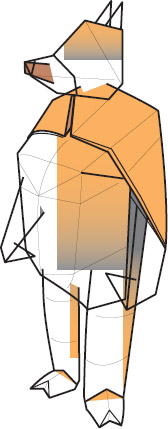
Most importantly, enjoy yourself! Nick Robinson
All origami instructions use a common set of symbols which allow you to make the model even if the words are a foreign language.

1) Fold, the lower corner to the upper corner.

2) Fold the lower corner to the top corner, crease and unfold.

2) Fold the lower corner to the top corner, crease and unfold.
Repeat the move on the other side.  3) Fold the left half behind on a vertical crease.
3) Fold the left half behind on a vertical crease.  4) Fold the lower edge to the crease.
4) Fold the lower edge to the crease. 

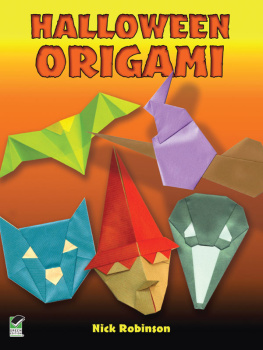
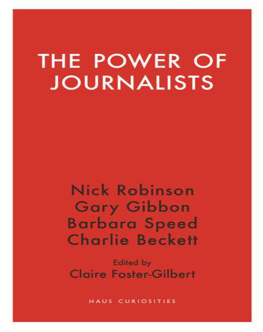
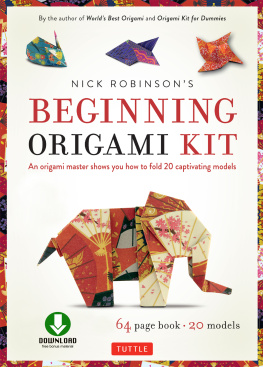
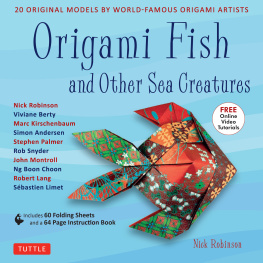
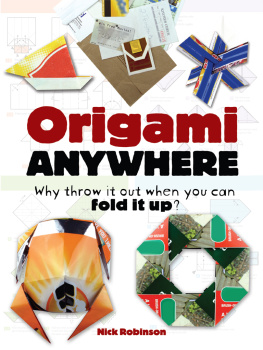





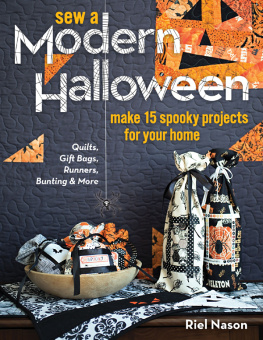



 Copyright
Copyright Despite what some people think, folding paper isnt something for which you need huge amounts of dexterity or skill.
Despite what some people think, folding paper isnt something for which you need huge amounts of dexterity or skill.  The act of folding is a motor skill that becomes easier with practice and concentration.
The act of folding is a motor skill that becomes easier with practice and concentration. 
 Folding in a group with other more experienced folders is highly recommended, since they will be able to quickly help you past those awkward steps and share their experiences (and models) with you.
Folding in a group with other more experienced folders is highly recommended, since they will be able to quickly help you past those awkward steps and share their experiences (and models) with you.  Most importantly, enjoy yourself! Nick Robinson All origami instructions use a common set of symbols which allow you to make the model even if the words are a foreign language.
Most importantly, enjoy yourself! Nick Robinson All origami instructions use a common set of symbols which allow you to make the model even if the words are a foreign language.  1) Fold, the lower corner to the upper corner.
1) Fold, the lower corner to the upper corner.  2) Fold the lower corner to the top corner, crease and unfold.
2) Fold the lower corner to the top corner, crease and unfold.  3) Fold the left half behind on a vertical crease.
3) Fold the left half behind on a vertical crease.  4) Fold the lower edge to the crease.
4) Fold the lower edge to the crease. 